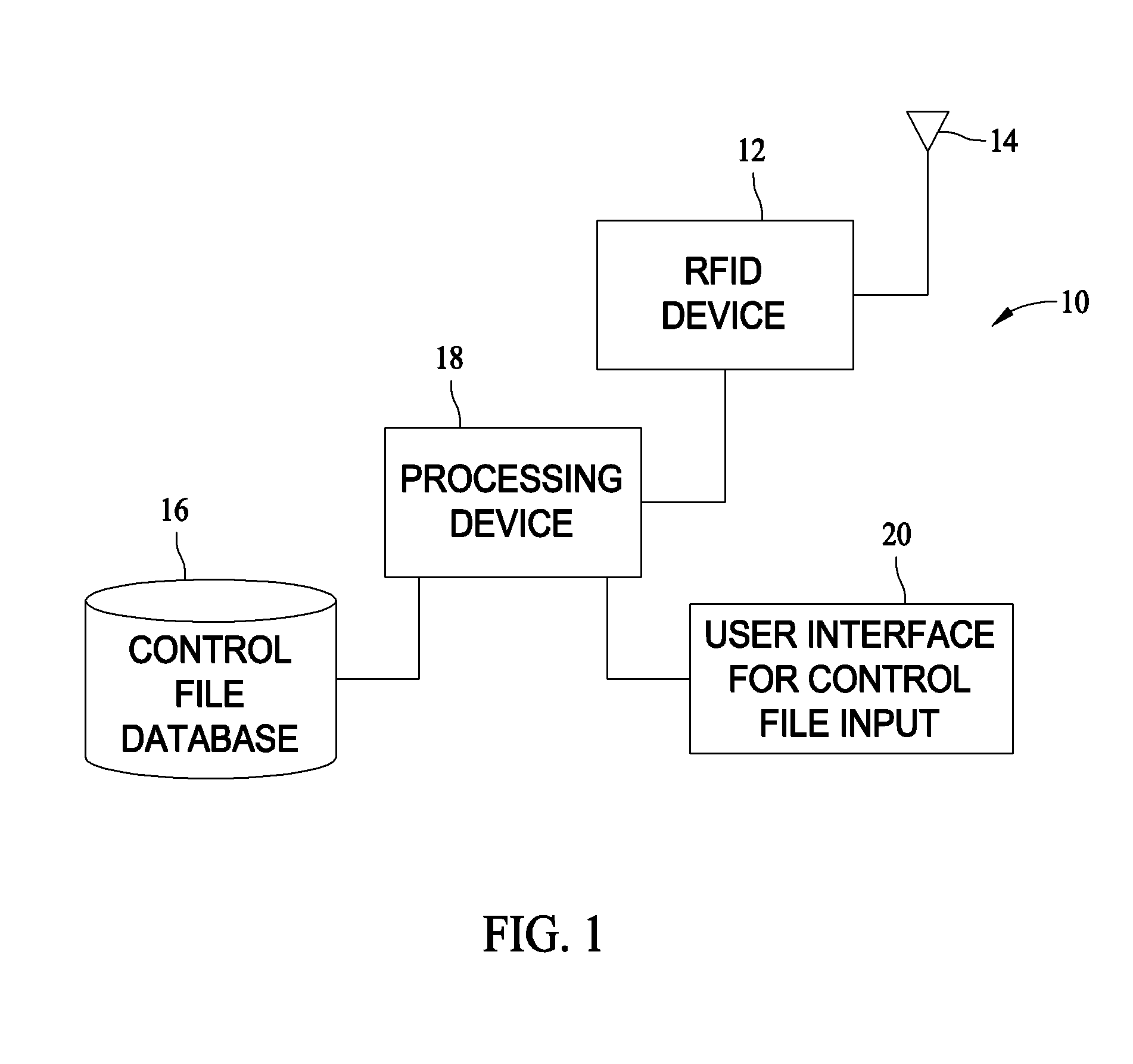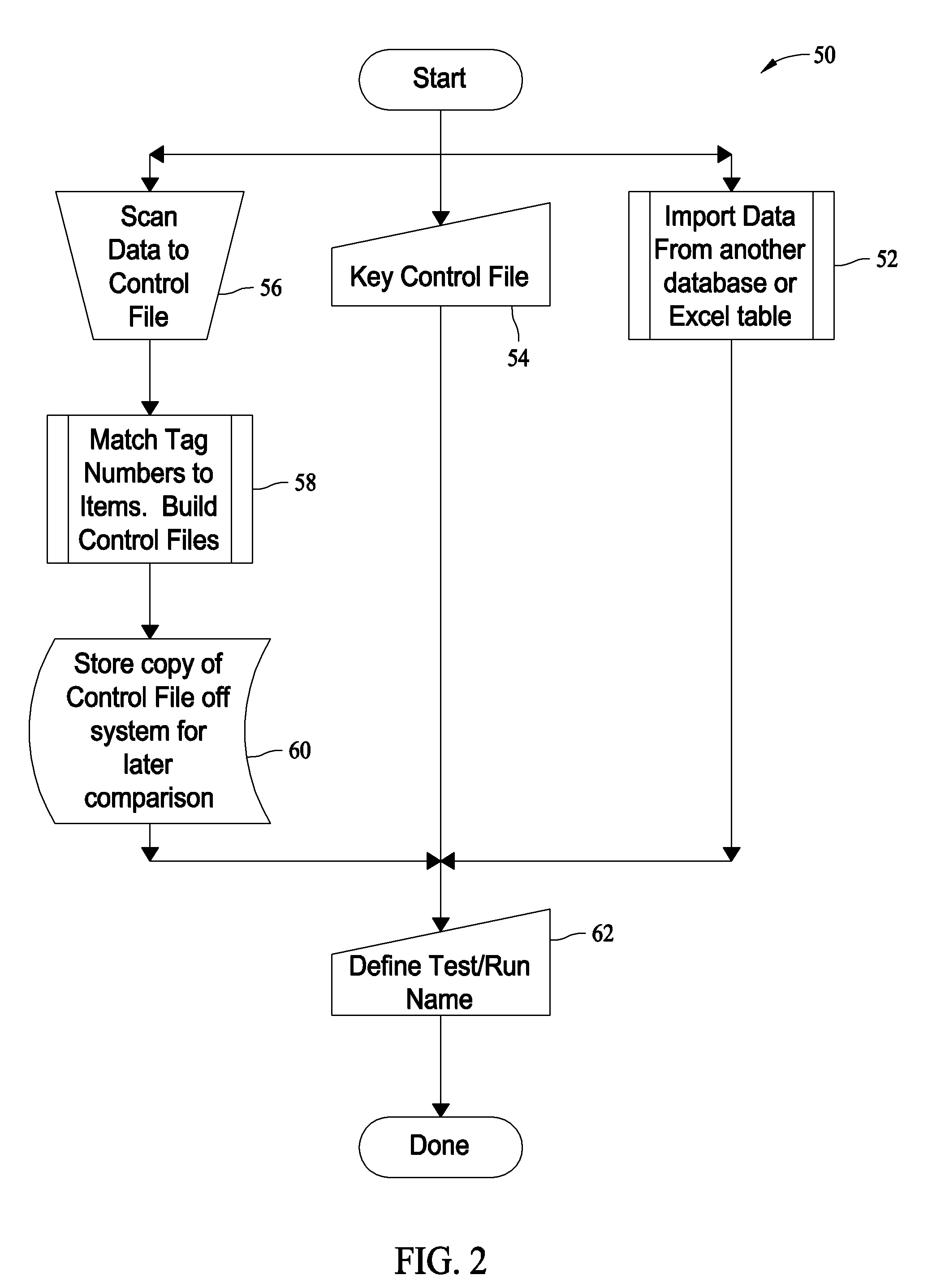Methods and systems for RFID tag read verification
a technology of rfid tags and read verification, applied in the field of rfid tag utilization, can solve the problems of not being able to compare imported (read) data with known rfid tag identifiers, locations, and not being able to quickly identify which tags
- Summary
- Abstract
- Description
- Claims
- Application Information
AI Technical Summary
Benefits of technology
Problems solved by technology
Method used
Image
Examples
Embodiment Construction
[0010]Herein described are methods and systems for receiving and processing RFID tag reader output to provide useable information directed to one or more specific applications. The function of the described RTRV system is to provide fast and accurate verification of RFID tag reads as reported by an RFID reader and measured against a previously built control file and to provide inspection alerts as indicated at the time the RFID tags are read and compared to the control file.
[0011]For example and in one embodiment, RFID reader-antennae assembly read data is parsed into information from which the user can create sub-sets of the data by tag type, items tagged, tags read, not read, etc. The parsed data is further available to generate reports that create a tangible record of tag reads. Such reports and records may provide insight to the user in determining the optimal placement of a tag on an item. Once the data is parsed and manipulated into subsets, output from the system provides a u...
PUM
 Login to View More
Login to View More Abstract
Description
Claims
Application Information
 Login to View More
Login to View More - R&D
- Intellectual Property
- Life Sciences
- Materials
- Tech Scout
- Unparalleled Data Quality
- Higher Quality Content
- 60% Fewer Hallucinations
Browse by: Latest US Patents, China's latest patents, Technical Efficacy Thesaurus, Application Domain, Technology Topic, Popular Technical Reports.
© 2025 PatSnap. All rights reserved.Legal|Privacy policy|Modern Slavery Act Transparency Statement|Sitemap|About US| Contact US: help@patsnap.com



